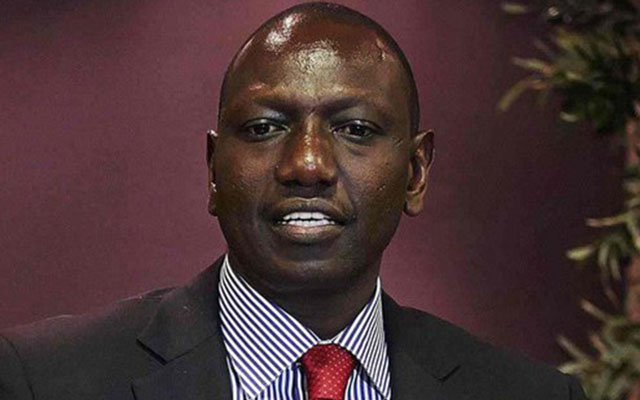Govt, private sector synergies anchor dairy sector resurgence

Edgar Vhera Agriculture Specialist Writer
THE positive impact of Government’s astute economic policies is beginning to manifest for the dairy sector with production hitting a 16-year all-time high last year thanks to the collaborative efforts of the Government, private sector and development partners.
The positive vibe born out of the collaborations essentially put the sector on a positive growth trajectory with statistics availed by the Zimbabwe Association of Dairy Farmers (ZADF) showing that raw milk production rose 14 percent from 79, 6 million litres in 2021 to 91, 4 million litres in 2022.
And justifiably, Lands, Agriculture, Fisheries¸ Water and Rural Development permanent secretary, Dr John Basera recently attributed the sector’s positive growth to the interventions by Government and its development partners.
“The interventions are part of the country’s Livestock Recovery and Growth Plan including the Government’s private sector-funded dairy heifer programme, with a deliberate effort to increase the national cows in milk from 19 000 in 2021 to 29 000 in 2022.”
The cow in milk figure rose 45 percent from 20 000 in 2021 to 29 000 in 2022.
Milk production continues on an upward trend with a six percent rise from 36 to 38 million litres from January to May this year in comparison to the same time period last year.
In 2018, the Second Republic initiated the Command Livestock Programme, which was launched by the President Mnangagwa at Gwanda showground after the first distribution of 200 heifers was done at the Zimbabwe International Trade Fair (ZITF) in April the same year.
During the launch the President handed over 660 heifers to 151 beneficiaries from Matabeleland South’s seven districts. The heifers distributed comprised Brahman, Brano and cross Brahman breeds, which were all a part of the 1 660-herd allocated to the province under the scheme.
Then, the President said: “We are not financing this programme from the fiscus, but we got the money from the private sector, which has renewed confidence in us while we develop our agriculture sector. Those who benefited will have to repay after five years and we are confident that at that time we would have empowered a lot of our people as we seek to build our national economy.”
The distribution of heifers under Command Livestock introduced new breeding animals with strong genetics into smallholder agriculture to boost national beef production for food security and economic growth.
The Presidential Sileage Programme (PSP) being facilitated by the Agricultural Finance Corporation (AFC) and Commercial Bank of Zimbabwe (CBZ) has benefited 1 338 farmers. Sileage is a highly nutritious and affordable feed option, which the Government is promoting under the ‘on farm-feed formulation scheme,’ started in 2021.
The PSP input package had 25 kg of maize seed for farmers in high rainfall areas and 10 kg of red sorghum for those in dry areas for silage production that covered one hectare. Each beneficiary received five bags of 50 kg for basal fertiliser, five bags of ammonium nitrate fertiliser, 5 kg legume seed (either velvet beans, lab-lab or sun hemp), tick grease and five litres of herbicides.
Lands, Agriculture, Fisheries, Water and Rural Development Minister, Dr Anxious Masuka said the livestock sub-sector contributed significantly to household and national food and nutrition security, foreign currency earnings and was a source of livelihood for about 67 per cent of the country’s rural households.
“The dairy value chain is a high employment generator, which provides direct employment to approximately 30 000 people and indirectly to 1, 3 million households.
‘’For this reason, Government has been very keen to support the sector and continues to allocate resources and other forms of support to foster its growth,’’ Minister Masuka observed, as he addressed delegates at the eighth ZADF annual general meeting in Harare last year.
In the 2022 budget Finance and Economic Development Minister Professor Mthuli Ncube, mindful of the need to revitalise the local dairy industry, introduced a five percent levy on the value of imported dairy products to re-capitalise the Dairy Revitalisation Fund (DRF).
In the 2023 budget Prof Ncube said there was need to gradually substitute imports through increased local production, coupled by a simultaneous increase in the uptake of raw milk by processing companies from the current level of 70 million litres to 130 million per annum by 2025.
Government proposed to gradually reduce milk powder imports on a sliding scale starting at 75 percent in 2023 to 50 percent in 2024, then 25 percent in 2025. The effects of these fiscal measures are beginning to bear fruit as milk product imports dropped 16 percent from US$37 million in 2021 to US$31 million in 2022.
Government-led private sector driven interventions
ZADF national chairperson, Mr Ernest Muzorewa said this year the country was expecting a 20 percent increase in raw milk production from 91 million litres in 2022 to about 108 million litres.
“Dairy farming is important to Zimbabwe’s economy. Until the recent increase, smallholder dairy farmers produced about three percent of the country’s milk output.
“Markets are strong but production systems are generally inefficient with growth coming from increases in the number of cows rather than in milk production per animal,” said Mr Muzorewa.
He said there were several challenges affecting the growth, viability and the competitiveness of the dairy sector, including low productivity, limited number of dairy animals and weak genetics in the dairy herd, high production and processing cost, limited access to affordable finance and foreign currency, high compliance cost and effects of climate change.
To bridge this gap, dairy farmers must modernise by adopting proven technologies and management systems that will increase the quantity and quality of milk they produce, he said.
Mr Muzorewa said one of the initiatives to grow the sector was the European Union-funded Zimbabwe Agricultural Growth Programme. Under its portfolio, it supports the Transforming Zimbabwe’s Dairy Value Chain for the Future (TranZDVC) project. The project has mobilised and registered more than 4 000 new dairy farmers between 2019 and 2022.
“This initiative aims to address the root causes of underperformance in the dairy value chain by strengthening financing, production, processing and market linkages. The project works with over 4 800 small, medium and large-scale dairy farmers.
“The overall objective of the project is to contribute to the development of a diversified and efficient dairy sector that promotes inclusive economic growth,” said Mr Muzorewa.
Transforming Zimbabwe’s Dairy Value Chain for the Future (TranZDVC) project coordinator Dr Edison Chifamba said imports of milk powder declined 20 percent from 8, 9 million kg in 2021 to 7, 4 million kg in 2022.
Dr Chifamba said if the current growth rate was maintained, Zimbabwe is confident of surpassing the national milk target requirement of 150 million litres by 2025. The country requires 130 million litres of milk annually.
In rural communities, access to credit for investments in agriculture is an especially difficult and sometimes onerous challenge. There are few affordable credit options for rural farmers with limited or no assets as financial institutions see them as high-risk borrowers.
“To increase dairy production and productivity, the project imported 500 in-calf heifers from South Africa between 2020 and 2021. The dairy cows were distributed to different areas through a heifer matching grant facility led by three private companies – Dendairy, Nestle Zimbabwe (a conglomerate) and ProDairy.
“Participating farmers are already benefiting from improved family nutrition and increased agricultural incomes from milk sales,” Dr Chifamba.
The Jersey and Friesian breed distributed by TranZDVC produce more than 25 litres of milk per cow per day while Government and other partners received capacity building training on dairy cows’ genetic improvement.
TranZDVC procured 4 000 straws of sexed semen and 4 000 straws of conventional dairy semen that farmers can access through Dairy Services and ZADF at US$22 and US$5 per straw for sexed and conventional dairy semen respectively.
Dr Chifamba said under TranZDVC, key milestones had been achieved in areas of importing and distributing improved dairy breeds, financing investments in dairy productive assets and infrastructure through the matching grants facility, exhaustive dairy training and capacity building programmes.
“TranZDVC is promoting investments in dairy productive assets and infrastructure to ensure access to finance for dairy producers through a matching grants facility. The purpose is to support investments to increase milk production and milk sales, participation by small-scale farmers in the dairy value chain, greening of manufacturing and production processes, decent job creation and local production of affordable feed,” he said.
The facility is limited to capital investments in productive assets such as machinery, equipment and buildings and does not include finance for working capital and services.
“At least US$2 million worth of grants have been disbursed to date, targeting large-scale farmers, processors and milk collection centres.
“As part of this facility, dairy farmers across the country accessed improved dairy breeds through the heifer matching facility where TranZDVC imported and distributed 500 in calf heifers to 282 small-holder dairy farmers across Zimbabwe,” added Dr Chifamba.
Dr Chifamba acknowledged the close collaboration between the Government, We Effect and its partners ZADF, Zimbabwe Farmers Union (ZFU) and Zimbabwe Dairy Industry Trust (ZDIT) and private sector players in the economic growth of the dairy value chain in Zimbabwe.
“We are optimistic of producing over 150 million litres per annum by 2025,” said Dr Chifamba.
Artificial insemination services are also being implemented as a breeding improvement strategy.
Many smallholder livestock farmers struggle with the high cost of feed, which can account for up to 70-80 percent of raw milk production costs when feed is obtained from manufacturers or retail shops in Zimbabwe.
Dr Chifamba said TranZDVC introduced nutrient-dense drought-tolerant forage crops and is promoting the production of maize/legume mixed crop silages to reduce feed costs.
“Participating farmers were selected for livestock feed trials using diets based on velvet bean (Mucuna pruriens), hyacinth bean (Lablab purpureus) and cowpea (Vigna unguiculata) to improve livestock feeding and nutrition. The farmers were also trained on how to produce hay and make home-based feeds. Over 1500 farmers have benefitted,” he said.
The advent of artificial insemination (AI) has reduced incidences of inbreeding and line breeding and introduced better gene pool into the country.
Dairy sector stakeholders have also developed a Dairy Sector Strategic Plan (2021-2025) for improved performance of the dairy value chain in Zimbabwe.
A beneficiary of the heifer scheme, Mr Lindwell Moyo of Hololo Village, Madona Line in Tsholotsho said when he received three heifers in 2018, he never imagined that five years down the line, the animals would increase to 11.
“I received three heifers under the scheme. I now have 11 cattle. The cows are giving me at least a calf each year. At district level we have eight farmers who benefitted from the Command Livestock programme and these now have a total of 28 cattle as a result of the scheme,” said Mr Moyo.
Another beneficiary, Mrs Soneni Ncube said she was contributing to the growth of the national herd, thanks to the Presidential Heifer Scheme that gave her a special breed of cattle.
“This is a special and very expensive breed with one animal worth as much as US$800. The breed is different from our indigenous ones and it has really boosted my herd. When I heard about the programme, I was one of the first people to complete the necessary forms and in no time, we were told to travel to Bulawayo to receive the cattle at the ZITF,” said Mrs Ncube.
Mrs Ncube has nine beasts now from the three heifers she received. She is growing banner grass, which she mixes with stock feeds to reduce the cost of feeds.









Comments